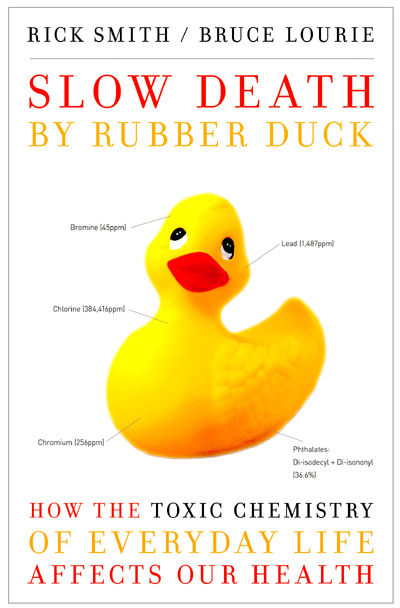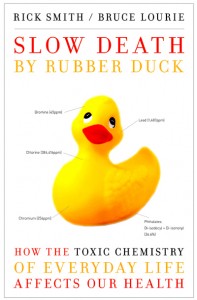
 What do you think would happen if you got a wild hair and decided to spend a week slathering yourself with shampoos, soaps, deodorants, and perfumes? Most of us do a little of this every day, but let’s say you were curious and upped the ante a little, took a few more showers, and used a few more products. Would you end up carrying around more chemicals?
What do you think would happen if you got a wild hair and decided to spend a week slathering yourself with shampoos, soaps, deodorants, and perfumes? Most of us do a little of this every day, but let’s say you were curious and upped the ante a little, took a few more showers, and used a few more products. Would you end up carrying around more chemicals?
Those of us concerned about toxic ingredients in our everyday products work hard to get the message out. Some of us go a little crazy in the effort. Take two environmental advocates from Canada-Rick Smith and Bruce Lourie. Fed up with the lack of regulatory response to toxic concerns, they decided to be guinea pigs in their own chemical experiment. They spent a week in a condo, surrounded with typical sources of contaminants, like personal-care products, canned foods, and stain-resistant clothing and furniture.
The experiment was broken up into sections. Rick says his daily regimen included nine personal-care products-no more than many of us use every day-and in 48 hours his phthalate levels jumped up to 22 times above what it was before the experiment. (Phthalates are found in many personal-care products and are connected to reproductive problems.) Blood and urine tests were used to determine the levels of chemicals.
Rick also microwaved in plastic containers, and drank from metal cans. The result? His bisphenol-A (BPA) levels went up seven-and-a-half times-in two days. BPA is a chemical used to make plastics, and has been linked to breast cancer because of its ability to mimic female hormones, as well as to prostate cancer and childhood developmental problems. What does this mean for those of us performing these same activities every day for years, or worse, for infants exposed to BPA in baby bottles and canned formulas?
We’ve talked about the dangers of triclosan. Rick used that too, in his soaps, toothpastes and deodorants. His levels of the chemical leapt up to 2,900 times that of what they were when he started. Triclosan has a chemical structure similar to dioxin-a class of toxic carcinogen-and survives to accumulate in the soil we use for farming. Public-health officials worry that using so many antimicrobials, like triclosan, will encourage the development of “super bugs” resistant to antibiotics. Did you know that triclosan can even be found in clothing items like socks and underwear?
Rick and Bruce published a book about their experiences, called Slow Death by Rubber Duck: The Secret Danger of Everyday Things. You could argue that their experiment may not have passed strict scientific protocol, but their observations are garnering much-needed attention to the issue of toxic exposure. “[Slow Death by Rubber Duck] isn’t just alarmist environmental shock and awe,” says O-The Oprah Magazine. “It’s a thoughtful look at how pollution has shifted over the years from something tangible and transparent (industrial pollutants as the cause of acid rain) to something abstract and nuanced (BPA’s links to breast cancer). The challenges this change presents, as many of the world’s top scientists explain in these pages, should be of serious concern to us all.”
“Using a variety of test methods,” says Colleen Mondor, of The Booklist, “the authors determined individual ‘body burdens,” or the toxic chemical load we carry. The legacy of our chemically addicted society is not just all around us, but also inside us and it is killing us.”
Have you read a copy of this book? Please tell us your thoughts.
Photo courtesy Beautiful Mess X? via Flickr.com.

